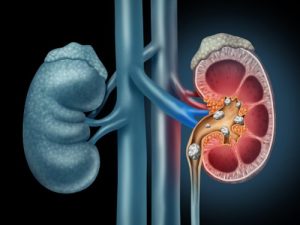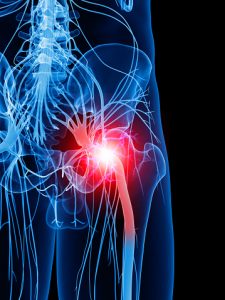Another week has wrapped up, which means it’s time for your weekly health news round-up. We discussed some interesting topics such as causalgia, a pain syndrome caused by peripheral nerves; trismus, a medical condition commonly known as “lock-jaw”; as well as the causes, symptoms, and ways to prevent calcium oxalate kidney stones.
We at Bel Mara feel we need to do our part to promote health and well-being, and what better way to do that than by spreading knowledge. To better round off your week, we have also included information on chyluria, a condition characterized by milky urine, and the causes, symptoms, and treatments for osmotic diarrhea.
What is osmotic diarrhea? Causes, symptoms, treatment, and home remedies
Advertisement
 Osmotic diarrhea refers to a gastrointestinal ailment characterized by an increased passage of watery stools. Normal stools are already composed of a high percentage of water, but osmotic diarrhea implies an excessive loss of water with feces.
Osmotic diarrhea refers to a gastrointestinal ailment characterized by an increased passage of watery stools. Normal stools are already composed of a high percentage of water, but osmotic diarrhea implies an excessive loss of water with feces.
Osmotic diarrhea is thought to occur when food is not fully absorbed in the small intestine, exerting an osmotic force which draws an excessive amount of fluid into the intestine. Osmotic diarrhea can occur in any way and is especially prone in individuals intolerant to sugar and those suffering from malabsorption syndrome. Continue reading…
Calcium oxalate stones: Causes, symptoms, and prevention
 Calcium oxalate stones are the most common type of kidney stone affecting western society. Kidney stones are abnormal, hard, chemical deposits that form within the kidney, also referred to as nephrolithiasis or urolithiasis. While generally small in size, akin to a grain of rice, some calcium oxalate kidney stones may grow much larger and be difficult to pass.
Calcium oxalate stones are the most common type of kidney stone affecting western society. Kidney stones are abnormal, hard, chemical deposits that form within the kidney, also referred to as nephrolithiasis or urolithiasis. While generally small in size, akin to a grain of rice, some calcium oxalate kidney stones may grow much larger and be difficult to pass.
It is estimated that about 10 percent of people will experience a kidney stone in their lifetime. Of these first-time kidney stone sufferers, about 70 percent will develop recurrences. Continue reading…
What causes chyluria (chylous urine)? Symptoms, diagnosis, and treatment
 Chyluria is characterized by the presence of chyle in the urine, giving it a milky appearance. Chyle consists of lymph and lipid particles and is bodily fluid normally found within the lymphatic system, which carries digested fats from the small intestine to the bloodstream. These lipid particles are commonly known as chylomicrons, which are composed of fats and proteins.
Chyluria is characterized by the presence of chyle in the urine, giving it a milky appearance. Chyle consists of lymph and lipid particles and is bodily fluid normally found within the lymphatic system, which carries digested fats from the small intestine to the bloodstream. These lipid particles are commonly known as chylomicrons, which are composed of fats and proteins.
Having milky urine may be a feature of another condition such as urinary tract infection, sexually transmitted diseases, kidney inflammation, and nephrotic syndrome. While they may appear similar, they are different from chyluria. Continue reading…
What causes trismus? Symptoms, diagnosis, treatment, and exercises for trismus
 Trismus is the medical term for “lock-jaw,” a condition that causes the muscles in the jaw, known as the muscles of mastication, to spasm or contract uncontrollably. Trismus lockjaw is commonly associated as an effect of tetanus infection but can be the result of a few causes. Those affected by trismus typically have an inability to open their mouth, making it difficult to eat, perform speech, and maintain proper oral hygiene.
Trismus is the medical term for “lock-jaw,” a condition that causes the muscles in the jaw, known as the muscles of mastication, to spasm or contract uncontrollably. Trismus lockjaw is commonly associated as an effect of tetanus infection but can be the result of a few causes. Those affected by trismus typically have an inability to open their mouth, making it difficult to eat, perform speech, and maintain proper oral hygiene.
Advertisement
There are temporary and permanent cases of trismus development, however, most cases tend to fall into the former. The normal variation of mouth opening falls in the range of 40 to 60mm, which is akin to about two fingers’ breadth up to three fingers’ breadth with some variation found between genders. Continue reading…
What causes causalgia? Symptoms, diagnosis, and treatment
 Causalgia is a pain syndrome that can be minor or severe with symptoms usually appearing within 24 hours of an injury to the peripheral nerves. The peripheral nerves extend from the spine and brain to the arms, legs, as well as the internal organs.
Causalgia is a pain syndrome that can be minor or severe with symptoms usually appearing within 24 hours of an injury to the peripheral nerves. The peripheral nerves extend from the spine and brain to the arms, legs, as well as the internal organs.
There is a bundle of nerves that run from the neck to the arm, and in the majority of cases of causalgia, this is where injury occurs. People who suffer from causalgia syndrome are hypersensitive in the area of the affected nerve. Causalgia is often referred to in the medical profession as complex regional pain syndrome type 2. Continue reading…
